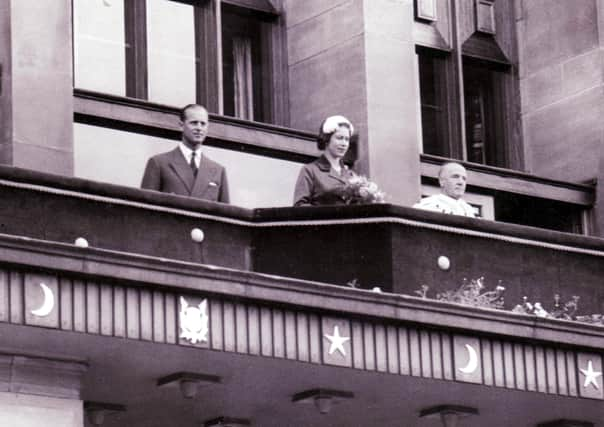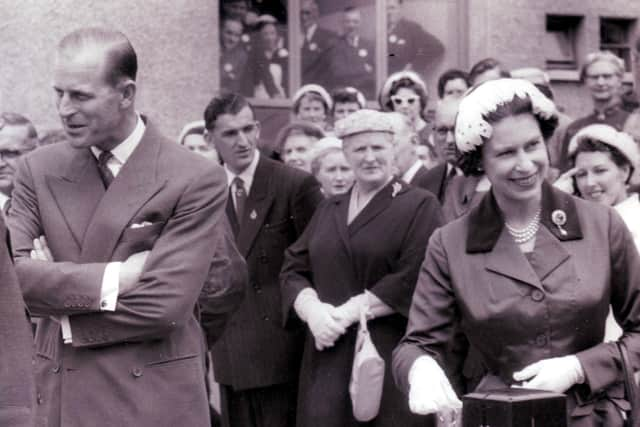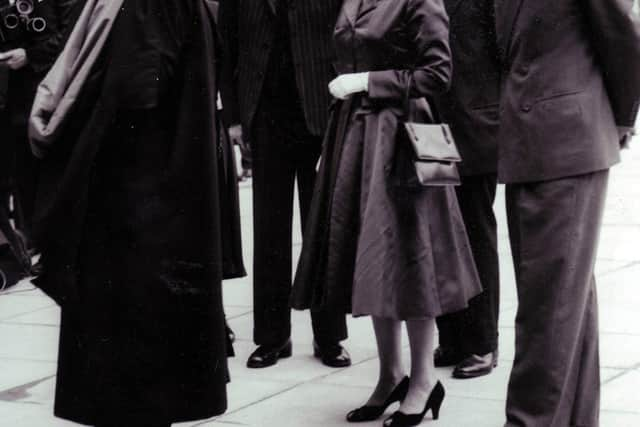Nostalgia: A royal visit at a time of huge growth for Kirkcaldy


It was called Templehall.
By 1950, the burgh boundaries extended from Chapel in the west to Dysart in the east, and from Muirton Farm in the north to Tyrie Burn in the south, but that wasn’t all housing.
Chapel was still an isolated village and, of the 4890 acres within the burgh boundary, 2200 acres were still agricultural land.


The blanks on the map were soon to be filled in.
Advertisement
Hide AdAdvertisement
Hide AdIn 1952 it was proposed to form a new neighbourhood at Templehall, to house 9000 people. This had already started with the 350 houses at Bogie Parks, which took about 1300. It was also envisaged that housing at Muttonhall – what was to become Dunnikier – would cater for a further 4000.
In the first half of 1953, Kirkcaldy Corporation had been granted a warrant allowing it to built 500 houses in the Templehall area. By the end of that year 700 houses had been built, developing the area around the recently-completed Templehall Junior Secondary School, and in the next years more than 800 houses were scheduled to be built.
As early as 1953 Templehall School had to be enlarged and primary schools in the are were also bulging.


At the time Templehall was started Kirkcaldy had a population of around 49,000, with a little over 14,000 houses, only half of which had bathrooms and 30 per cent of which were still without an inside toilet.
Advertisement
Hide AdAdvertisement
Hide AdA survey in 1950 came up with a grand total of 758 shops in Kirkcaldy.
The largest single category, understandably, was grocers and general stores (95) but food was also sold by 85 confectioners, 31 butchers, 49 bakers, seven dairies, seven fishmongers, 41 fried fish shops, and nine fruiterers and florists.
Besides the town’s five cinemas, leisure activities in the town were catered for with more than a dozen general halls – including the Adam Smith and Beveridge Halls – and Beveridge, Ravenscraig and Gallatown parks.
There was also a greyhound stadium at Oriel Road.
The 50s saw many changes to the town apart from the building of Templehall, many of which are still visible today, some of which are gone as if they had never existed.
One such was the sinking of Seafield Colliery.
Advertisement
Hide AdAdvertisement
Hide AdBegun in May 1954, it was to have provided work for 2500 men for 150 years, winning coal from deep under the Firth of Forth. It was a promise never fulfilled.
Still here today, however, was the new Town House, which was originally designed way back in 1937, but only completed in 1956.
Two years later, in June it was visited by Her Majesty The Queen and Prince Philip.
The Royal couple dined with the Provost and local dignitaries in the Council Chamber in the Town House, before going to visit another new addition to the town, Kirkcaldy High School, which had opened earlier that month.
It replaced the former High School on the corner of Carlyle Road, which went on to become Fife College, and opened with 1200 pupils.
Comment Guidelines
National World encourages reader discussion on our stories. User feedback, insights and back-and-forth exchanges add a rich layer of context to reporting. Please review our Community Guidelines before commenting.